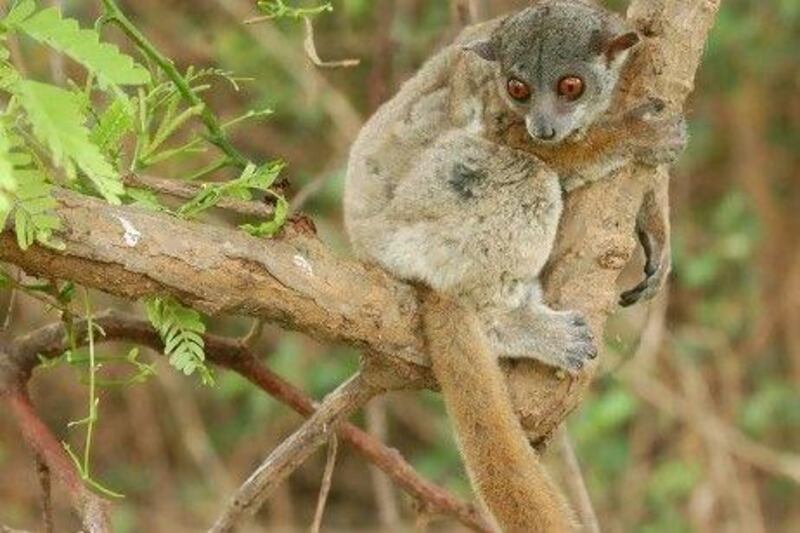NEW DELHI // Twenty-five species of monkeys, langurs, lemurs and gorillas are on the brink of extinction and need global action to protect them from increasing deforestation and illegal trafficking, researchers said yesterday.
Six of the severely threatened species live on the island nation of Madagascar, off south-east Africa. Five more from mainland Africa, five from South America and nine species in Asia are among those listed as most threatened.
The report by the International Union for Conservation of Nature (IUCN) was released at the United Nations' Convention on Biological Diversity being held in Hyderabad.
Primates, mankind's closest living relatives, contribute to the ecosystem by dispersing seeds and maintaining forest diversity.
Conservation efforts have helped several species of primates, which are no longer listed as endangered, said the report, prepared every two years by the world's leading primate experts. The report, which counts species and subspecies of primates across the world, noted that Madagascar's lemurs are severely threatened by habitat destruction and illegal hunting, which has accelerated dramatically since the change of power in the country in 2009.
Among the worst affected was the northern sportive lemur with only 19 known individuals left in the wild in Madagascar.
"Lemurs are now one of the world's most endangered groups of mammals, after more than three years of political crisis and a lack of effective enforcement in their home country, Madagascar," said Christoph Schwitzer of the Bristol Conservation and Science Foundation, one of the groups involved in the study. "A similar crisis is happening in south-east Asia, where trade in wildlife is bringing many primates very close to extinction," said Mr Schwitzer.
More than half of the world's 633 types of primates are in danger of becoming extinct because of human activity such as the burning and clearing of tropical forests, the hunting of primates for food and the illegal wildlife trade.
While the situation appears dire for some species, wildlife researchers say that conservation efforts are beginning to pay off, with several primates being removed from the list, now in its seventh edition.
India's lion-tailed macaque and Madagascar's greater bamboo lemur have been taken off the endangered inventory for 2012 after the targeted species appeared to have recovered.
Also, conservation efforts have ensured that the world did not lose a single primate species to extinction in the 20th century, and no primate has been declared extinct so far this century, said Russell A Mittermeier, president of Conservation International and the chairman of the IUCN species survival commission's primate specialist group.
"Amazingly, we continue to discover new species every year since 2000. What is more, primates are increasingly becoming a major eco-tourism attraction, and primate-watching is growing in interest," said Mr Mittermeier.






